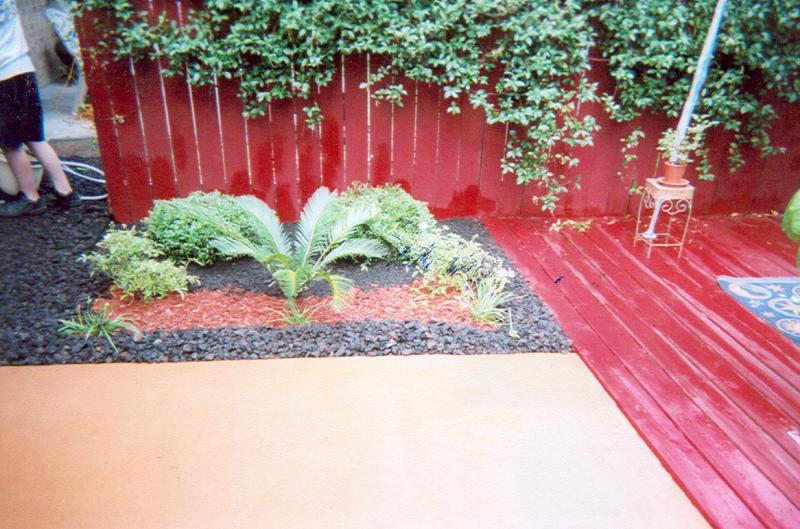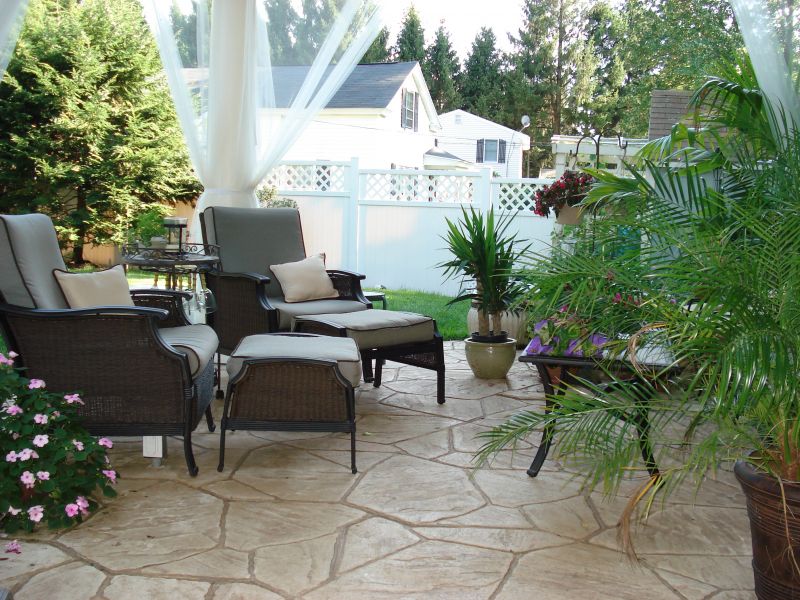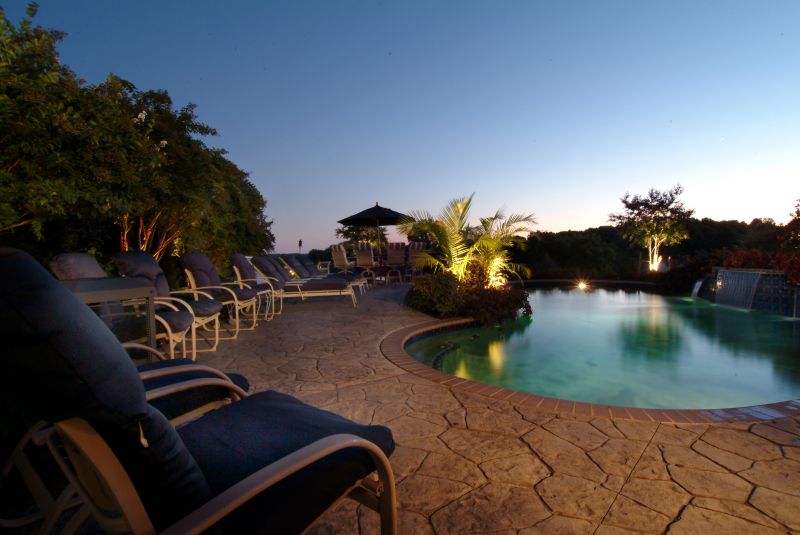Killer Looks For Concrete
Concrete. Its cold, its grey, its boring.
Hold onto those suppositions for just a moment.
Its been calculated that concrete is the second-most-consumed substance on earth, behind only water. Or think about it this way: there is almost one ton of concrete produced for every single human on the planet
EVERY SINGLE YEAR. If the opening statements above are true, thats an awful lot of cold, grey, and boring that were unleashing on our world.
Luckily, landscape and building professionals have figured out that concrete is a medium that they can work with, like an artist uses watercolors or modeling clay. And they can employ a wide variety of tricks and techniques to dress up a simple slab, turning it into a legitimate focal point in any landscape.
One of the common knocks against concrete is the uninspiring hue. Concrete grey may be a hip color choice for an industrial loft apartment, but in the garden, it just looks lazy and unimaginative. If youre having a new concrete patio or pool deck installed, know that tinting chemicals can be added at the plant, so that whats poured out of the truck is the exact color you want. Or you can achieve the same effect on an existing slab by using solid-color concrete stain, available at any home improvement store. Youll end up with something similar to what Lawn Expressions did on this Baytown, TX patio:
You can break up a large expanse of concrete by using color on just part of it, visually dividing the area into two separate spaces. Check out the world of difference between the red inner patio and the grey outer surface in this shot from Avant Garden Inc in San Anselmo, CA:
Thats much warmer than plain concrete grey, but maybe you dream in even more color, and want something even less monochromatic. A newly-poured concrete slab can be top-dressed with powdered colorant and left to soak into the concrete as it cures. The result is a mottled look that looks more like natural stone. Like a faux finish, but for concrete. To do it on an older concrete slab, the pros often use acid stain, applied with an ordinary tank sprayer. Heres a nice example from Lunagy Design, found in Marie Jeans yard in Vegas, baby:
Okay, you say, youve prettied up my concrete slab with color. But maybe its still too flat and boring for you. Welcome to the wonderful world of concrete texturing. Remember how when you were 5, youd press your handprint into a wet driveway or sidewalk and let it dry? Looked cool, even years later, right? Well, take that same principle and multiply it across the entire slab.
Crews can put down large rubber stamps on concrete that hasnt quite hardened fully to transfer any number of intricate, natural-looking patterns and designs in a walkway, driveway, patio, or pool deck. Want the look of flagstone without paying for pallets of rock and a team of stonemasons? A couple of guys, a concrete truck, and a few oversized rubber mats can create this, like they did in Bonefishers backyard:
Its far cheaper than real stonework, and its done way faster. It often takes weeks to do a huge pool deck out of real flagstone, but this example in Damascus, MD from Traceysdesigns represents one days work for a good concrete crew:
(Know how you can tell its stamped concrete and not real stone? Check out that straight-as-an-arrow control joint in the lower right. Thats gotta be there in a concrete deck, to help prevent cracking, but it doesnt stand out like it would in a plain-Jane slab.)
But flagstone isnt the only look you can accomplish with stamped concrete. Fancy a brick patio instead? Tint the concrete dark red and use a different stamp, like TB Concrete did under this pergola in Granite Bay, CA:
Want the look of massive cut stones laid side-by-side? Super-thin stamps give the top surface a roughed-up rocky texture, and the control joints themselves create the square slabs. Thats what Jeff Cook did in his Oakview, CA backyard:
Put some of the coloring and stamping techniques together, and you can create a floor that looks like it was handcrafted centuries ago in the Old World. In these shots from Gehrke, notice how the lighter-colored border looks like pieces of smooth-cut stone, while the insets have a darker shade and a lot more texture, like natural slabs from a completely different piece of rock. And yet, its all one layer of concrete that was worked just after it was poured.
But stamping can be done even on existing concrete surfaces! Crews can apply a thin skim coat of fresh concrete on top of the old stuff- just enough for them to apply new texture to- and leave behind an amazing work of art. Feast your eyes on Andreas Chandler, AZ yard:
Artisans not only crafted those stone columns with vertical stamping, but made an old concrete bridge look like authentic wooden planking
with concrete stamps!!!
Want to take back those cold, grey, boring comments from before? Maybe seeing some of these incredible special effects will inspire you to order a truckload or two of concrete for your next project and give water a run for its money as most-consumed substance on earth.



